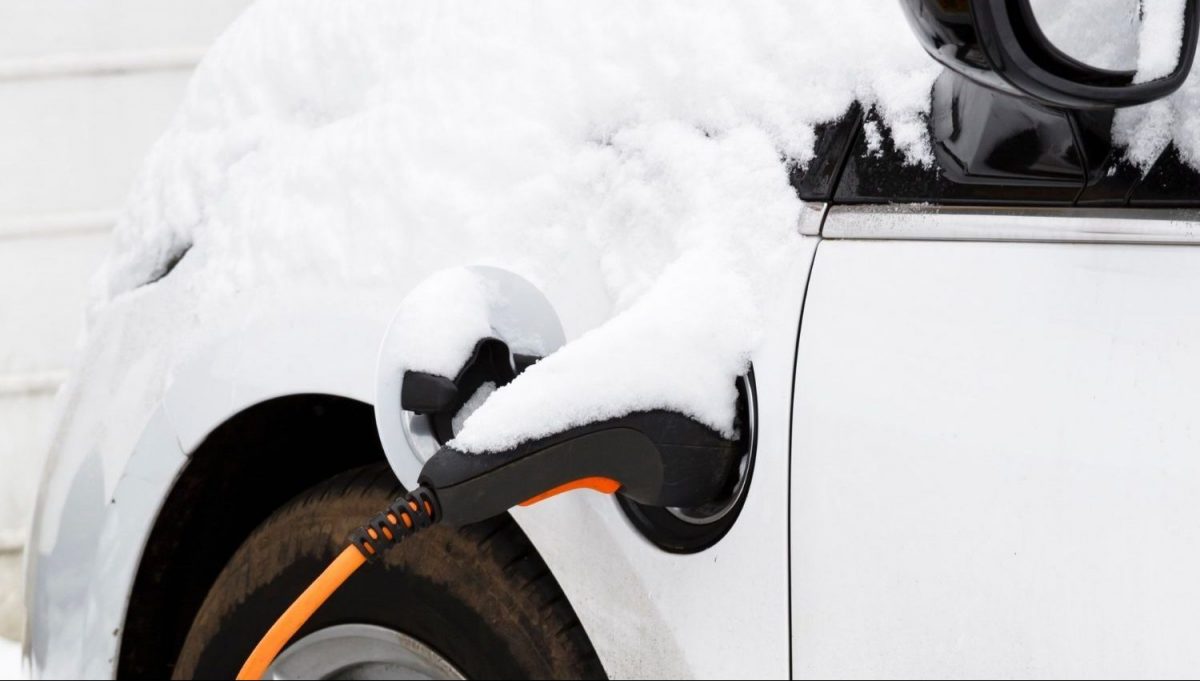For most of the year, EV drivers can expect to exceed their car’s real-world range, but as temperatures start to fall, you will notice that you get fewer miles on your dashboard display after your normal charge.
You may never have noticed, but the efficiency of a petrol car also drops in winter. Over very short trips in cold weather your petrol could have used a quarter more fuel. Yet lower efficiency, and therefore lower range, becomes much more obvious to an electric car driver.
What happens to EV range in winter?
Range drops in winter because an EV battery is more efficient when warm – you can expect a 12% reduction in range just because it’s cold. You can’t do much about that. But the bigger drain on your car’s battery comes from keeping you warm. The good news is that there are quite a few things you can do to improve your range and stay comfortable through the cold months. How much range you lose in the cold depends on: the car you drive, how you drive it, how you heat it, how cold it is outside, where you park, and so on.
Top tips for driving an EV in winter
If this is your first winter in an EV, there are many actions that you can take to maximize your comfort and range when the temperatures dip. Here are our top tips:
1. Prewarm your EV

Time your charge and set pre-warming to make sure your battery and car start warm
Prewarming or preconditioning settings on your car allow you to heat the battery and cabin while you are still plugged in at home. Prewarming means you can jump into a warm car without doing any early morning windscreen scraping or that familiar chilly first mile in your old car. Winter isn’t all bad for an EV driver!
As well as comfort for you, the preheat function means the battery can be ready to move the vehicle more efficiently too.
You can set the prewarming to begin at a set time every day so that your electric car is ready when you leave in the morning. Just make sure the car is plugged in while you precondition, because you want to draw energy from the grid to do this, not drain down your battery.
2. Time your charge to warm your battery
For maximum efficiency, try to time your overnight charge to finish close to the time as you leave in the morning as possible. A battery warms as it charges, giving you more available range for your day than a battery that has filled and then got cold.
A warm battery also means that your regenerative braking will also work better from the start, which leads us to top tip number three.
3. Make use of regenerative braking in the cold
If the roads are icy first thing, regenerative braking modes will help you avoid skids and slides. In fact, regenerative braking is said to be even better than ABS braking technology at keeping you on the road.

Regenerative braking helps you stay on the road when there is snow and ice
The problem is that when the battery is very cold the regenerative braking system is less effective – cold batteries can’t accept as much surplus energy as warm batteries can. You won’t get much regenerative brake power from a completely full battery, either. For more efficient driving and charging tips, check out our money-saving tips with an EV.
4. Switch to Eco mode on icy roads
Most EVs have a driving option called “eco mode” or something very similar. An eco mode reduces the amount of power supplied to the drive motor.

Eco driving modes are lower torque, making them the perfect choice for snowy or icy roads
The benefit of using the eco mode in the winter is that by reducing the power to the motor, the car accelerates less, and helps to reduce the possibility of wheel spin. That’s why it’s a good idea to switch to eco mode whenever driving when there’s ice or snow on the roads. As eco mode also limits energy-consuming features like the heating system, you might be more comfortable switching modes after you get off the slippy, untreated roads.
It’s worth noting that EVs get better traction on icy roads anyway, thanks to the placement of batteries, which lower the centre of gravity and add extra stability.
5. Take steps to reduce air heating
While a combustion engine produced a huge amount of waste heat, in an EV your onboard heating systems will have to do all the work. It takes a lot of energy to heat the air in a car. If you are on a long journey and need to squeeze every mile out of your battery range between charges, limiting the heater will help.
Using heated seats, or even a heated steering wheel, will definitely help you cut down on the cabin heater and save energy while keeping you comfortable. If you haven’t got inbuilt heated seats, you can buy a set that plug into the cigarette lighter for as little as £20 – that’ll be well worth the investment.
Dressing a little warmer, and using heated seats and steering wheel will have a very positive effect on your range and on your kWh consumption per mile.
Often waiting around in your car for your family? With an EV, you’ll no longer have to choose between sitting in a cold car and the guilt of firing up a petrol or diesel engine to keep warm. Stay warm without filling a car park with toxic fumes.

Checking your tyre pressures over winter can increase your miles per kWh efficiency
6. Change your tyres (or at least check them)
The UK hasn’t really taken to using winter or all-weather tyres compared to our neighbours in Europe. But even at 7 degrees C, swapping to winter tyres reduces stopping distances and make your car easier to control.
Even if you don’t go as far as swapping your tyres at this time of year, check the air pressure regularly. Air pressure is a too often ignored, but it’s a winning way to increase your EV’s range all year. When temperatures fall, tyre pressure may drop by as much as 10%. The recommended and maximum pressure for tyres can be found inside the driver’s door.
7. Check your home energy tariff
Our homes and cars start to use more energy as the nights turn long and temperatures dip low. EV drivers can get much cheaper overnight rates by signing up to an EV tariff.
8. Take your foot off the pedal
With a few tweaks, winter with your EV can be a breeze. Our last tip is to lower your speed. Speeding increases drag, and drag reduces mileage – so if ever there was a time to slow down, it’s through the winter.
Find an energy tariff that fits
